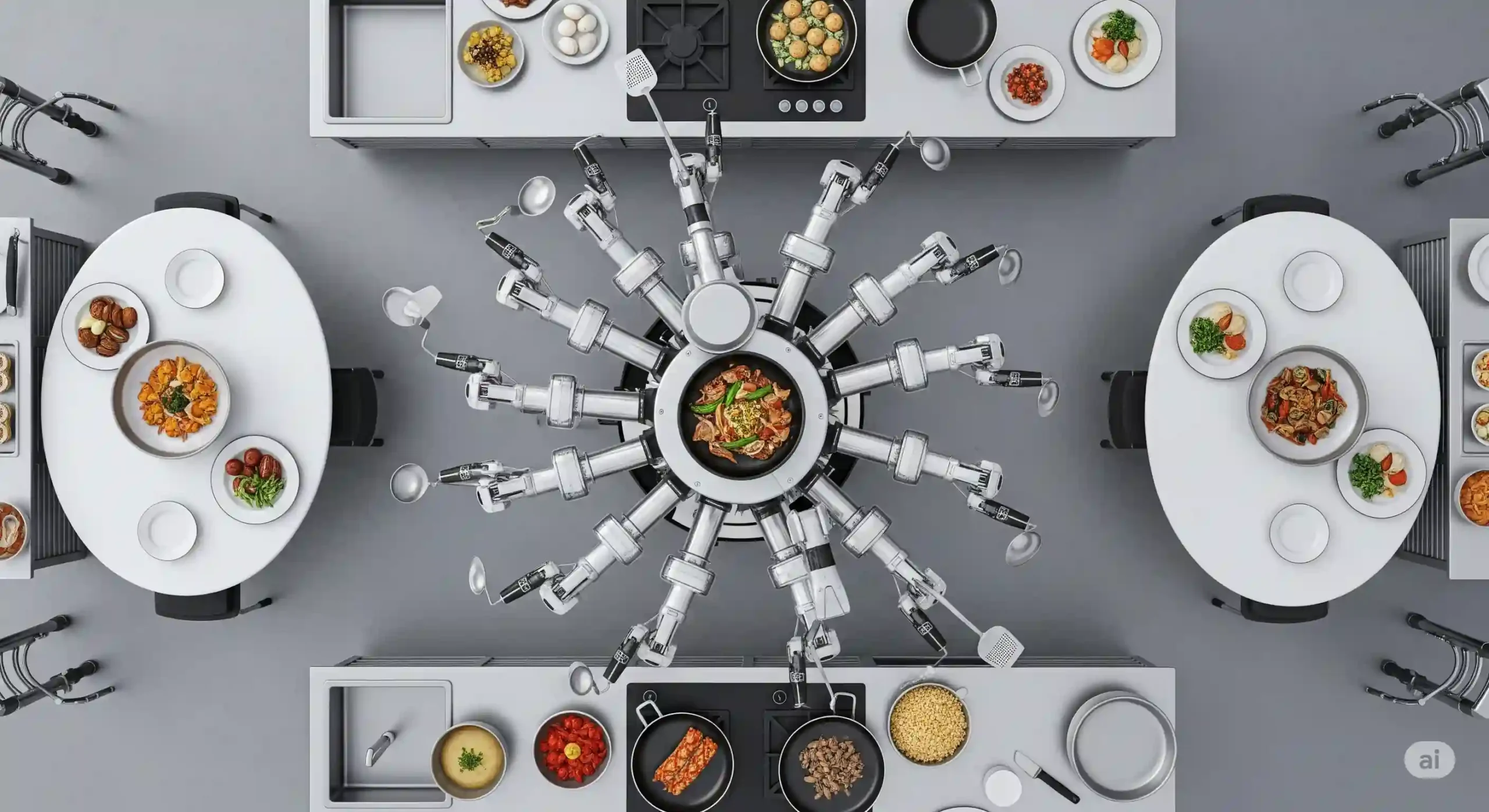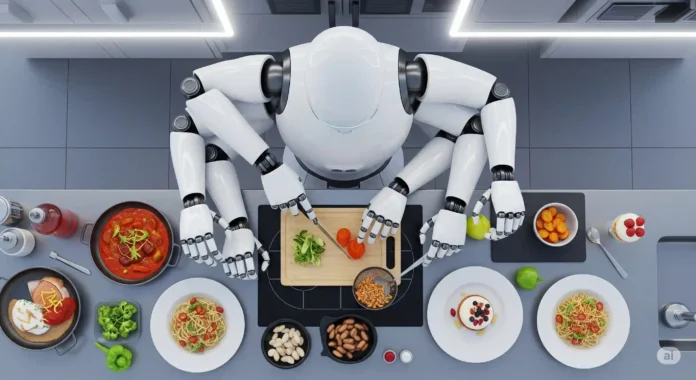In a world where technology is relentlessly changing the way of life, the catering industry is not left out. Robotic kitchens, which once seemed like the plot of a science fiction movie, are now becoming an increasingly tangible reality for cafes and restaurants. But is this a real revolution that can radically change the industry, or just an expensive and short–lived hobby? Let’s get this straight.
From automation to full robotization: the stages of the journey
The idea of automating processes in the kitchen is not new. Coffee machines, dishwashers, and programmable ovens are all familiar attributes of modern catering. However, robotic kitchens take this concept to a whole new level. We are no longer talking about individual devices, but about complex systems capable of performing a wide range of tasks: from cutting ingredients and mixing sauces to cooking complex dishes and even serving.
There are several key areas for the development of robotic kitchens:
Robot manipulators: This is perhaps the most vivid embodiment of robotics. Mechanical hands equipped with various attachments can perform monotonous operations with high accuracy and speed, such as turning cutlets, pouring drinks, and laying out pizzas.
Automated cooking lines: Similar to factory conveyors, such systems are designed for mass production of the same type of dishes, such as burgers, salads or woks. The ingredients are sequentially passed through various modules, where they are subjected to the necessary processing.
Intelligent control systems: The “brain” of a robotic kitchen that coordinates the operation of all mechanisms, monitors the availability of ingredients, optimizes processes, and can even be trained based on the data obtained.
Advantages of robotic kitchens: tempting prospects

Proponents of robotics see a number of undeniable advantages in it.:
Stable quality: The robot does not get tired, does not get distracted, and always follows a given recipe with millimeter precision. This guarantees a consistently high quality of dishes, excluding the human factor.
Increased productivity and speed: Robots can work around the clock without interruptions and weekends, significantly increasing the service speed and throughput of the establishment.
Cost optimization: In the long term, robotics can reduce personnel costs, reduce food waste through precise dosing, and increase energy efficiency.
Improved hygiene: Minimizing human contact with food reduces the risk of contamination and ensures higher standards of sanitation.
Addressing the shortage of staff: In many countries, the hospitality industry is facing a shortage of qualified chefs and kitchen staff. Robots can partially fill this gap.
Innovative image: The introduction of advanced technologies attracts the attention of customers and creates a reputation as a modern and progressive institution.
Skepticism and challenges: the flip side of the coin
Despite the impressive prospects, robotic kitchens also face a number of serious challenges.:
High initial cost: The introduction of robotic systems requires significant investments, which may be unaffordable for small and medium-sized businesses.
Limited flexibility and creativity: So far, robots are best at handling standardized tasks. Cooking original dishes that require improvisation and fine flair remains the prerogative of man. Adapting a robot to a new menu can be difficult and expensive.
Maintenance and repair: Robotic systems require expert maintenance and may fail, resulting in downtime and additional costs.
Social aspects and job losses: The mass adoption of robots inevitably raises concerns about job cuts for chefs and kitchen staff.
Customer perception: Not all customers are ready for their food to be prepared by a soulless machine. For many, the element of human warmth and individual approach is important.
The future of robotic kitchens: symbiosis or displacement?
Today we are witnessing an active search for balance. It is unlikely that robots will completely replace humans in the kitchens of gourmet restaurants in the near future, where the author’s approach and unique experience are appreciated. However, in the segments of fast food, canteens, food delivery, and even in some cafes with a large flow of customers, robotics has great potential.
Most likely, the future belongs to hybrid models, where robots will take over routine and time-consuming operations, and people will focus on creative tasks, quality control, developing new dishes and communicating with customers. Robots can become indispensable assistants to chefs, freeing up their time for culinary experiments and menu improvement.
Moreover, the development of artificial intelligence and machine learning technologies opens up new horizons. Robots will not only be able to follow recipes, but also analyze customer preferences, offer personalized dishes, and even participate in the creation of new culinary masterpieces.
Conclusion
Robotic kitchens are not just a fashion trend, but a natural stage in the evolution of the catering industry. They offer tempting prospects for improving efficiency, quality, and hygiene. However, serious economic, technological, and social challenges stand in the way of their mass adoption.
The success of robotics will depend on the ability to find the optimal balance between automation and the human factor, between efficiency and sincerity, between innovation and tradition. Those establishments that can competently integrate robotic solutions while maintaining their uniqueness and hospitality will undoubtedly benefit in the competition for the customer of the future. The revolution in the kitchen has already begun, and only time will tell its outcome.
Disclaimer: This article is informational in nature and reflects current trends in the field of robotics of public catering as of May 2025. The estimates and forecasts presented in the article are based on available data and expert opinions, but they are not exhaustive. When making business decisions about the implementation of robotic systems, it is recommended to conduct a detailed analysis taking into account the specifics of a particular institution, regional labor market characteristics and consumer preferences. The author is not responsible for the financial or other consequences of decisions made based on this material.



